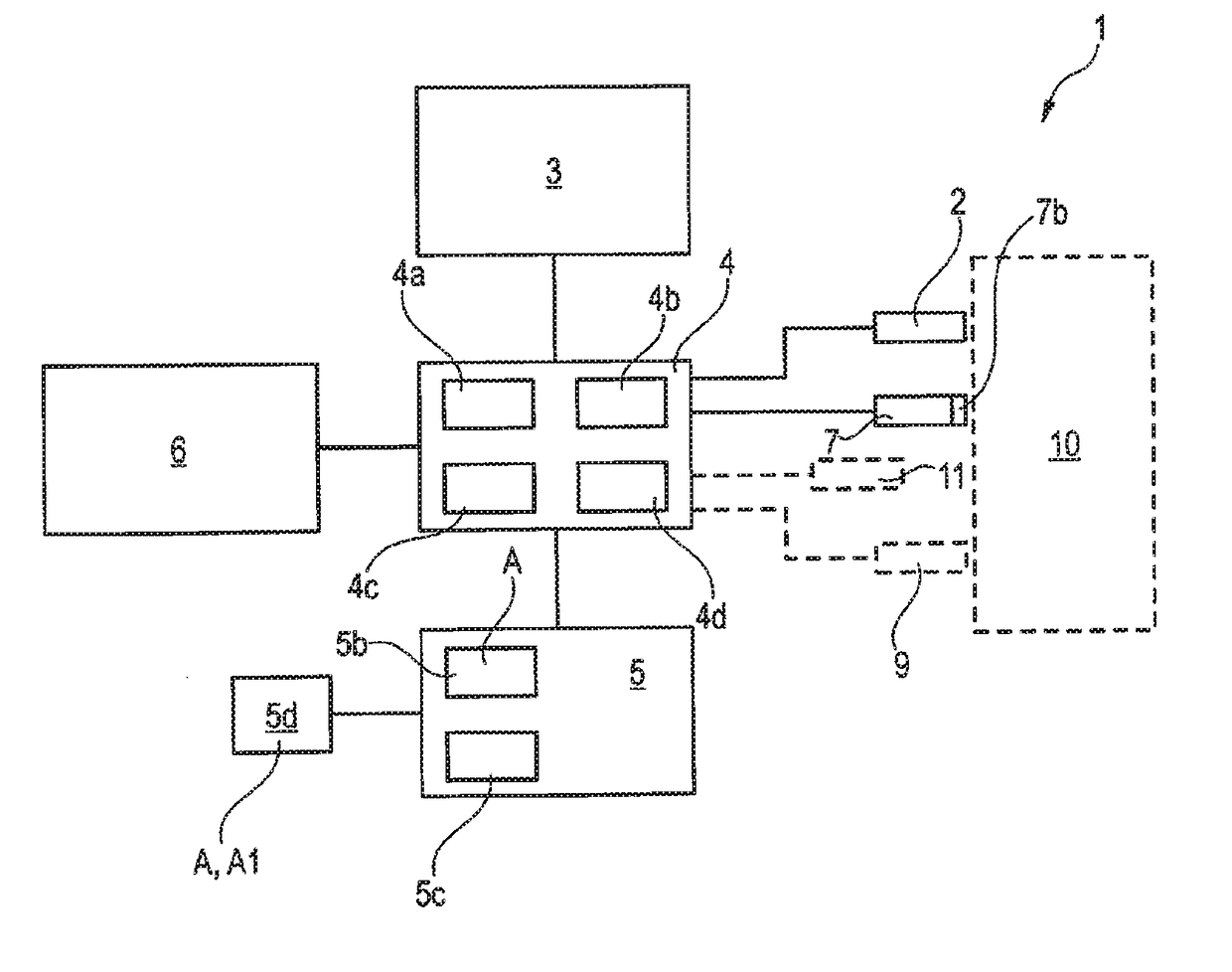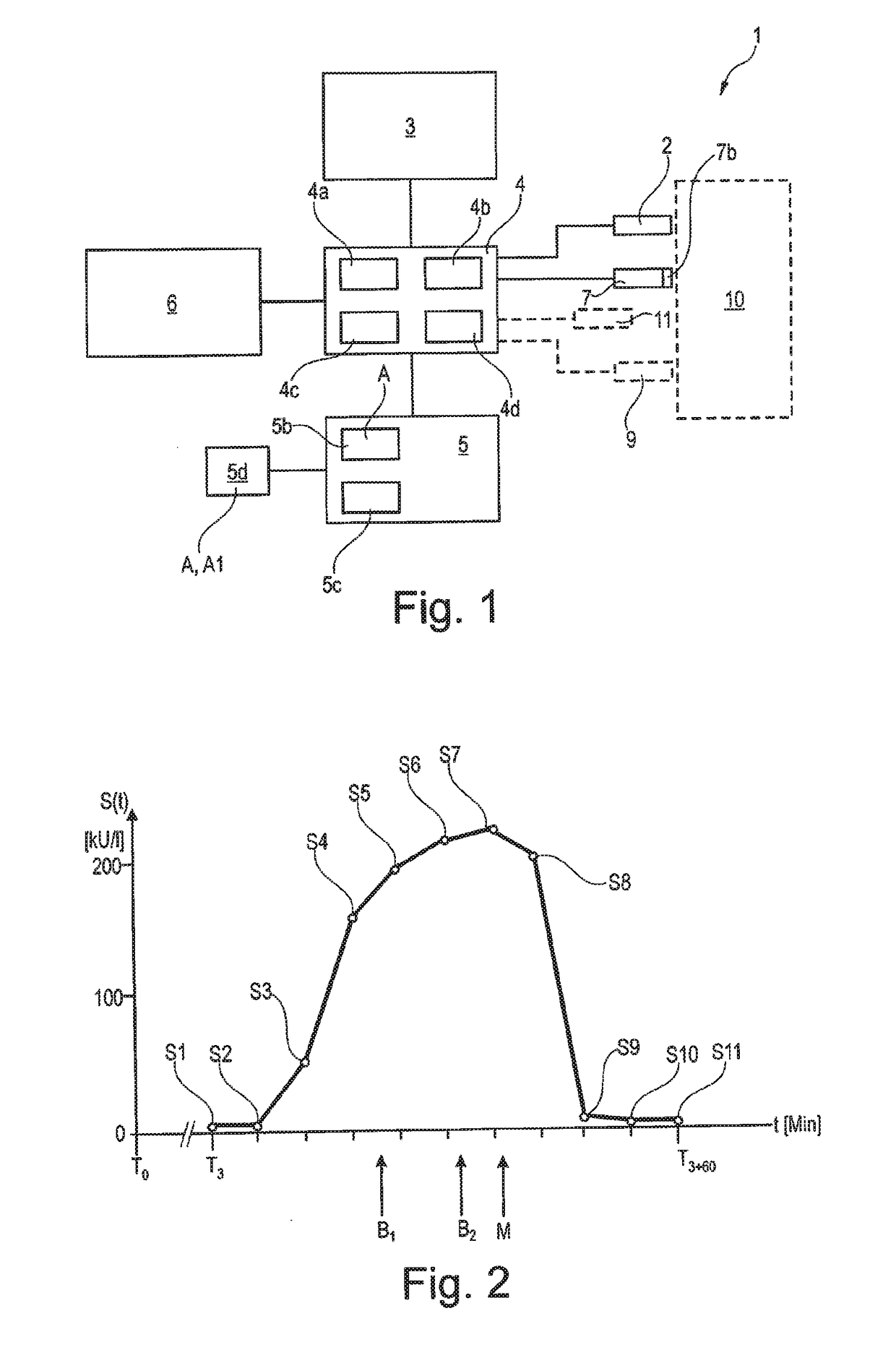Device and method for non-invasivel y monitoring a sedated or anesthetized person
a non-invasive and anesthesia technology, applied in the field of non-invasive and anesthesia monitoring devices, can solve the problems of reversible inhibition of function, small risk of patient being awake during the operation or feeling pain, and temporal,
- Summary
- Abstract
- Description
- Claims
- Application Information
AI Technical Summary
Benefits of technology
Problems solved by technology
Method used
Image
Examples
Embodiment Construction
[0020]It is an object of the invention a device and a method for the improved, noninvasive monitoring of a sedated or anesthetized person.
[0021]In particular, it is a further object of the present invention a device and a method for noninvasively determining the depth of sedation or the depth of general anesthesia of a sedated or anesthetized person.
[0022]This object is achieved by a device having the features of claim 1. Dependent claims 2 to 10 concern further, advantageous embodiments. The object is further achieved by a method having the features of claim 11. Dependent claims 12 to 20 concern further, advantageous method steps.
[0023]The object is achieved in particular by a device for noninvasively monitoring a sedated or anesthetized person, comprising a pain-stimulus generation device, comprising a measurement device for capturing a salivary amylase value of the person, comprising a control device and also comprising an output device, wherein the control device is designed suc...
PUM
 Login to View More
Login to View More Abstract
Description
Claims
Application Information
 Login to View More
Login to View More - R&D
- Intellectual Property
- Life Sciences
- Materials
- Tech Scout
- Unparalleled Data Quality
- Higher Quality Content
- 60% Fewer Hallucinations
Browse by: Latest US Patents, China's latest patents, Technical Efficacy Thesaurus, Application Domain, Technology Topic, Popular Technical Reports.
© 2025 PatSnap. All rights reserved.Legal|Privacy policy|Modern Slavery Act Transparency Statement|Sitemap|About US| Contact US: help@patsnap.com



